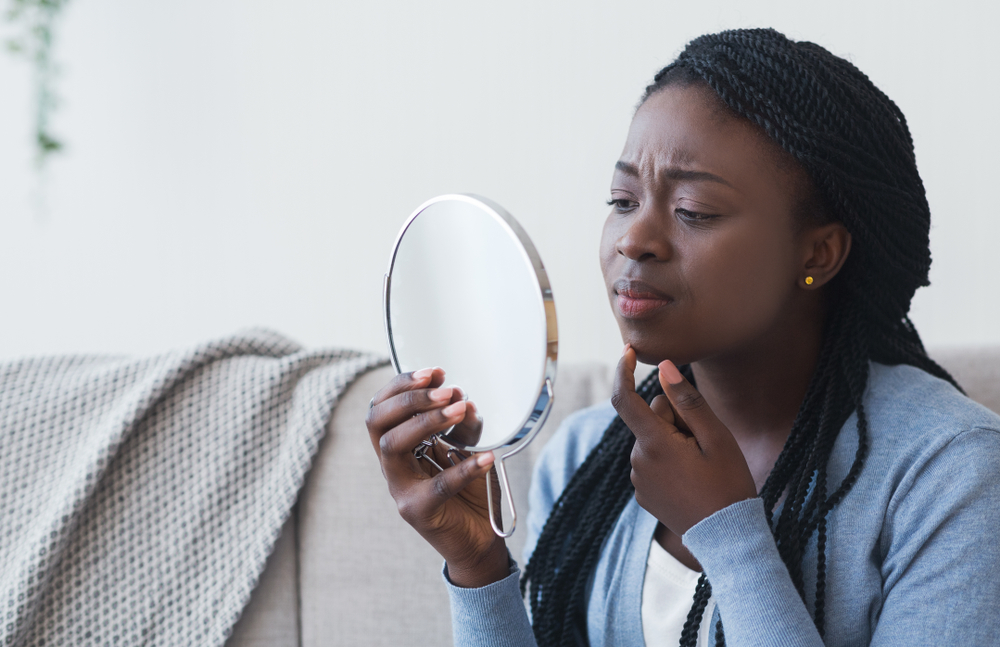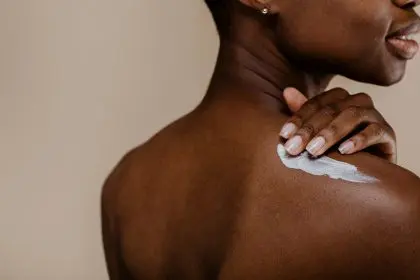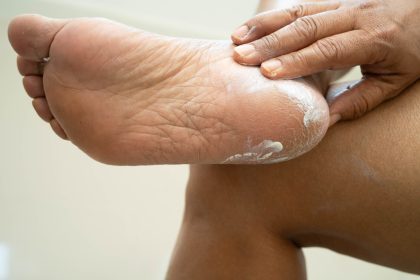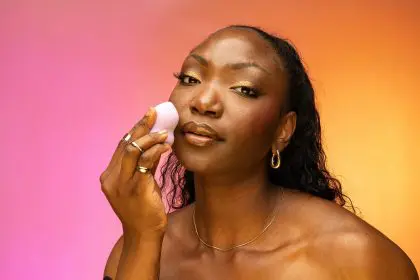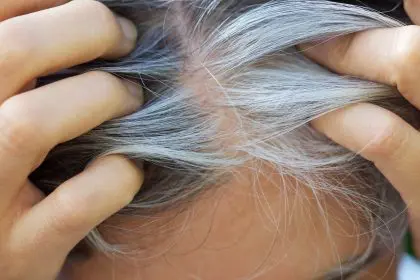Dark spots, those stubborn patches of hyperpigmentation, can linger on skin like uninvited guests. Whether sparked by sun exposure, acne scars, or aging, they affect faces, hands, and confidence alike. While no overnight fix exists, consistent care can lighten them in weeks, revealing a more even tone. Five approaches—topical serums, exfoliation, sun protection, diet shifts, and natural remedies—offer practical paths to brighter skin. Below, we explore these methods, numbered for clarity, delving into how they work and fit into daily life.
1. Topical serums: Targeted brightening power
Serums, packed with active ingredients, tackle dark spots at their source. Key players like vitamin C, niacinamide, and hydroquinone interrupt melanin production, the pigment behind discoloration. Vitamin C, an antioxidant, evens tone while fighting free radicals from UV rays. Niacinamide soothes inflammation, fading redness around scars. Hydroquinone, a stronger option, lightens stubborn patches but requires caution for sensitive skin.
Applying a pea-sized drop after cleansing, ideally at night, maximizes absorption. Lightweight formulas sink in fast, layering well under moisturizers. Drugstores stock budget-friendly options, while dermatologist-grade versions suit tougher cases. Consistency matters—daily use for four to six weeks often shows results. Irritation can flare, so patch-testing prevents surprises. For those seeking precision, serums cut through spots without bleaching healthy skin, making them a go-to for visible change.
2. Exfoliation: Clearing the old to reveal new
Exfoliation sloughs off dead skin, speeding up cell turnover to fade dark spots. Chemical exfoliants, like alpha hydroxy acids (AHAs) such as glycolic acid, dissolve surface buildup, lightening pigmentation over time. Beta hydroxy acids (BHAs), like salicylic acid, dive deeper, clearing pores and reducing acne-related marks. Physical scrubs work too, but gentler microbead-free versions avoid microtears.
Twice-weekly sessions, using a cleanser or peel, keep skin smooth without stripping it. Overdoing it risks redness, so starting slow—once a week—suits beginners. Drugstore pads or gels, often under $15, make this accessible, while spa-grade masks add luxury. Post-exfoliation, moisturizing locks in hydration, preventing dryness that can darken spots. By clearing the canvas, exfoliation paves the way for brighter, fresher skin in as little as two weeks.
3. Sun protection: Shielding skin from harm
Sunlight, a major dark spot culprit, worsens existing marks and sparks new ones. UV rays trigger melanin overdrive, deepening pigmentation, especially in summer or tropical climates. Broad-spectrum sunscreen, SPF 30 or higher, blocks this cycle, giving skin a chance to heal. Mineral formulas with zinc oxide deflect rays, while chemical ones absorb them, both effective for daily wear.
Morning application, even on cloudy days, forms a barrier—think two finger-lengths for face and neck. Reapplying every two hours during outdoor time, like beach trips, keeps protection steady. Hats and sunglasses add extra defense, cutting glare on sensitive areas. Affordable tubes line pharmacy shelves, and tinted versions double as makeup. Skipping this step undoes other efforts, as sun sneaks through windows or windshields. With diligence, sunscreen halts darkening, letting spots fade in weeks.
4. Diet shifts: Nourishing skin from within
What goes on the plate affects what shows on the skin. Foods rich in antioxidants, like berries, spinach, and nuts, combat oxidative stress that fuels hyperpigmentation. Omega-3 fatty acids, found in salmon or chia seeds, reduce inflammation, calming redness around spots. Vitamin E, in avocados and almonds, supports skin repair, while hydration from water or cucumbers keeps cells plump, aiding turnover.
Swapping processed snacks for whole foods isn’t a full overhaul—just small trades, like fruit over chips. A daily smoothie with kale and blueberries packs nutrients without fuss. Budget-friendly staples, like frozen produce or canned fish, stretch wallets. Sugar and dairy, linked to acne flares, are worth cutting back to avoid new marks. Results take time, often six weeks, but glowing skin from within complements topical fixes, creating a dual attack on discoloration.
5. Natural remedies: Gentle at-home helpers
Natural options, like aloe vera, licorice root, and turmeric, offer mild brightening for those wary of chemicals. Aloe, straight from the plant or in gels, soothes inflammation and may lighten scars with regular use. Licorice root extract, found in creams, inhibits melanin, evening tone. Turmeric, mixed with honey for masks, fights dullness with anti-inflammatory curcumin, though staining risks need care.
These remedies shine for simplicity. A weekly turmeric mask, rinsed after 10 minutes, fits busy schedules. Aloe doubles as a moisturizer, costing pennies per use. Drugstores carry licorice-infused lotions, blending tradition with convenience. Results lag behind serums—think eight weeks—but side effects are rare, suiting sensitive types. Pairing with sunscreen boosts impact, as nature’s helpers need UV protection to work. For patient users, these kitchen staples add a soft glow to fading efforts.
Why dark spots linger
Hyperpigmentation digs in due to melanin’s stubborn nature. Sun exposure, the biggest trigger, keeps spots dark by fueling pigment cells. Acne or cuts leave marks as skin heals unevenly, especially in deeper tones. Hormones, like those shifting in pregnancy, spark melasma, a cousin of dark spots. Aging slows cell turnover, letting discoloration settle. These factors stack up, but consistent care chips away, revealing clearer skin over time.
Challenges and solutions
Fading spots isn’t seamless. Serums and sunscreens cost more upfront, though generics keep budgets in check. Exfoliation risks irritation if overdone—sticking to mild formulas helps. Diet changes clash with cravings, but meal-prep hacks, like freezer smoothie packs, ease the shift. Natural remedies demand patience, and messy mixes like turmeric deter some; pre-made versions save time. Access varies—urban stores stock serums, but rural areas lean on online orders. Community clinics and co-ops bridge gaps, offering skin tips or affordable creams.
Building a routine
Starting small avoids overwhelm. Morning sunscreen and nightly serum form a core, with exfoliation twice weekly. A berry smoothie or spinach salad weaves in diet tweaks. Natural masks, used sparingly, add flair. Tracking progress—photos or notes—shows subtle shifts by week three. Drugstores and groceries supply most needs, and free skin-care classes at community centers guide beginners. Consistency, not perfection, drives results, turning weeks into wins.
A brighter horizon
The five methods—serums, exfoliation, sunscreen, diet, and natural remedies—offer no instant erase but a steady path to fading dark spots. Each step, from a vitamin C dab to a leafy lunch, builds toward even skin. Costs and time challenge commitment, yet affordable swaps and quick routines keep it doable. Across ages and skin types, these tools empower clearer complexions. As weeks pass, spots soften, proving patience and care can outshine stubborn pigment.

